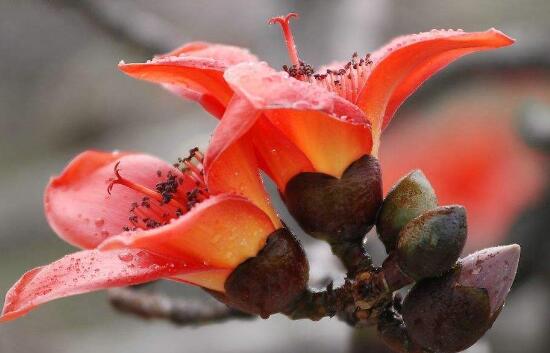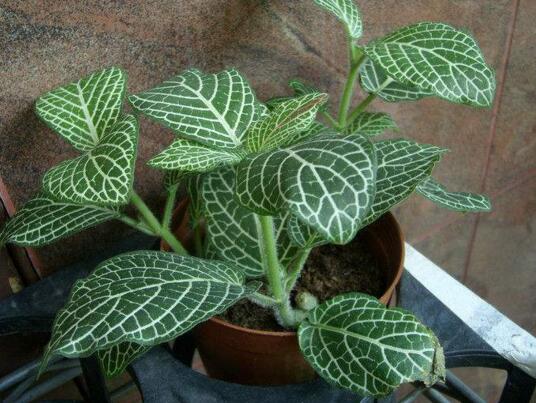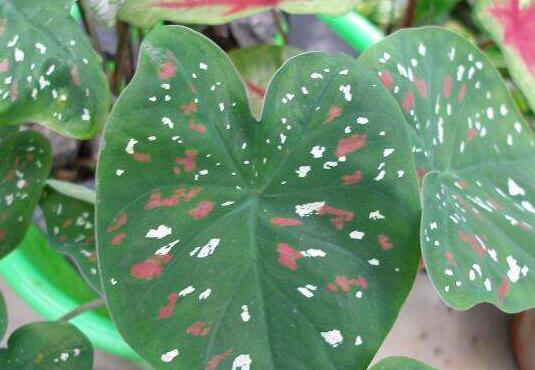What to do when kapok worms grow? pest control of kapok / 2 insects and 2 diseases are sprayed with medicine.
Kapok, also known as Hero Flower, is very red and beautiful, and is deeply loved by flower friends. In life, because of its beauty and the efficacy of kapok, many people want to raise kapok. However, in the process of breeding, kapok was attacked by diseases and insects for some reasons, so what about kapok worms? Let's go with the editor to take a look at the pest control of kapok.
1. Kapok worms, looking for medicine to spray

Through the breeding method of kapok, we know that it likes high temperature drying and is a very adaptable plant. Generally speaking, kapok has fewer diseases and insect pests, but it will also occur when it is poorly grown or poorly cared for. As for kapok worms how to do, it is very simple, determine the pests, and then spray with medicine. Here are four common diseases and insect pests of kapok. Let's take a look at the prevention and control methods.
II. Disease and insect pest control of kapok
1. Kapok leaf borer
Because kapok seldom grows worms and gets sick, when bugs come to the door, flower friends are very anxious. At this time, you can get to know the big leaf roller, because once the kapok grows, it is likely to be this bug. Its larvae are bluish green, with a length of about 25 mm. The adults are yellowish, and there are 12 brown and black dots arranged in four rows on the back of the head and chest.
Control methods: after determining the insect, the barrel-shaped leaves of the leaf borer were artificially cut off to eliminate the larvae so as to reduce the damage of the next generation. Then when the disease is serious, 20% peach Xiaoling EC or 20% chrysanthemum EC 2000 times should be sprayed in time for prevention and treatment.
2. Kapok small green leafhopper
In addition to the large leaf roller, another major pest of kapok is the small green leafhopper. The insect sucks tender shoots such as kapok with adults and nymphs, which will cause kapok leaves to twist, affect growth and even wither and fall off.
Control method: find the small green leafhopper in time, and then spray 40% omethoate, 50% fenitrothion, 50% phoxim and 80% dichlorvos EC 1000-1500 times, and the effect is better after 7 days. In addition, remove the fallen leaves of weeds in winter and spring and spray once on the ground if necessary to reduce the source of insects.
3. Kapok anthracnose
Anthracnose, one of the main diseases of kapok, mainly harms leaves. Symptoms: disease spots appear on the tip and edge of diseased leaves, which are nearly round, semicircular, amorphous, tea-brown to black; with the passage of time, it will infect the stems and branches, seriously affecting the growth of the plant.
Prevention and treatment methods: cut off the diseased leaves and burn them centrally to reduce the source of the disease; in severe cases, spray 1000 times of carbendazim or 1000 times of methyl topiramate for prevention and treatment, spraying alternately 3-4 times according to the weather and condition, once every 7-15 days.
4. Kapok spot disease
If kapok is not suffering from anthracnose, then we can directly determine that it is spot disease, the disease is generally 1-3 years of seedlings suffer more seriously. Symptoms: in the initial stage, the leaves appear brown dots, which gradually expand into round, near-round or irregular spots connected with each other; in severe cases, they will also cause leaf perforation and early fall.
Control method: after determining the spot disease, spray 1% Bordeaux solution or 0.5% Dysen zinc, or 0.01-0.05% benzoate solution for prevention and control, the effect is good. In addition, the disease resistance of plants can be improved by increasing the application of phosphate fertilizer during the disease period.
What to do when the lantern flower grows insects? disease and pest control of lantern flower / 3 insects and 2 diseases sprayed with medicine
As a common beautiful flower, lantern flower is very effective, it is like a lantern, it not only looks good, but also can treat kidney deficiency medicinally! Such plants are naturally lovable, but if they suffer from diseases and insect pests, the beauty of lantern flowers will never return. At that time, flower friends must be in a hurry! So, what if the lantern flowers grow worms? The following are five kinds of lantern flower pest control, let's go and have a look!
First, the lantern flower grows the worm, spray with medicine
In indoor potted plants, the breeding method of lantern flowers is not difficult, but no matter how easy the plants are, there will be problems if they are not raised or raised blindly, such as worms getting sick, which will seriously affect the ornamental quality of the plants. What if the lantern flowers grow worms? In fact, it is very simple to find out what kind of pest it is, and then spray it to solve it. Let's move on to the details.
II. Disease and pest control of lantern flowers
1. Aphids
Flowers are one of the most common pests, which also endanger the health of lantern flowers. Aphids mainly harm the young leaves and stems of Lantern Flowers, which are parasitic on leaves and absorb juice. Once aphids appear, they are dense and look very scary, so protection should be timely.
Prevention and control methods: when a small number of aphids are found, you can kill them manually and brush them off with tools such as a brush; when there are many aphids, spray 2.5% fish rattan essential EC 1200 times, and the effect is excellent after spraying several times in a row.
2. Red spider
One of the main pests of the lantern flower, it mainly harms the back of the leaves and survives by sucking the sap of the lantern flower leaves. Symptoms of damage: the plant will become malnourished and may show symptoms of yellowing and shedding of lantern leaves.
Control method: after the red spider is found, the whole plant should be thoroughly washed with large water, and then 2000 times of triclofenac EC should be sprayed, which can be effective several times in a row. If there is no myrrh, you can also use pepper water, cut tobacco water spraying and other ways to deworming.
3. Whitefly
Lantern flower worms, if aphids and red spiders are excluded, it is basically white whitefly. The insect will suck the sap of the mesophyll, which mainly harms the young leaves of lantern flowers, causing the leaves to curl up and dry up.
Control method: after the whitefly is found, it should be sprayed with 1500-2000 times of 25% prolene wettable powder in time. After 15 days, the plant will basically return to health.
4. Grey mold
In addition to growing insects, lantern flowers can get sick if they are not properly maintained, and one of the most common diseases is Botrytis cinerea. The disease often occurs when the temperature is relatively high and the humidity is relatively high, and the damage range is relatively wide, and the leaves, flowers and stems of lantern flowers may be damaged.
Prevention and control methods: clean up the parts that have been affected by the disease, in order to reduce the source of the disease; then, spray metalaxyl for prevention and control, once every 5 days, twice in a row, that is, the disease can be effectively controlled, generally 7mur10 no longer show harmful symptoms.
5. Root rot
Lantern flowers are prone to root rot when they are overwatered or when there is no timely drainage in the rainy season. Symptoms of the disease: at the beginning, the roots of the lantern flowers will rot; in the later stage, due to the inability to absorb water and nutrients, the whole plant may die.
Prevention and treatment: when the above diseases are found, if the condition is mild, you can spray 500 times Dysen zinc solution; if the decay is serious, throw it away directly.
With regard to the pest control of lantern flowers, this is the end of the editor's introduction. I believe that if you encounter worms or illness again, you should know how to do it! Generally speaking, lantern flowers are still easy to raise, but if they are not careful, they will also be disturbed by diseases and insect pests, so we must take good care of them. As long as this is the case, bugs will not come to us. Finally, may everyone's lantern flowers blossom beautifully!
What to do when the iron tree grows insects? pest control of the iron tree / 2 insects and 2 diseases are sprayed with medicine.
I believe many flower friends know that the iron tree is poisonous, but even so, some people still keep it at home because the iron tree is really good-looking. However, in the process of breeding, because of negligence, the iron tree will also grow insects and get sick, which will destroy its ornamental. So, what should we do if the iron tree grows worms? The following are four kinds of iron tree pest control, follow the editor to have a look!
1. Iron tree worms, spray with medicine
In the process of breeding iron tree, because of high temperature, dryness, poor ventilation, high air humidity and other factors, the plant will grow insects and get sick. Among them, the main insect pests are shell insects and small gray butterflies, and the main diseases are white spot disease and coal pollution disease. Once the long worm gets sick, it will affect the growth of the iron tree, so as soon as it is found, we should immediately spray to prevent and cure it. Specifically, you can refer to the prevention and control of diseases and insect pests.
II. Disease and insect pest control of iron tree
1. Scale insects
The iron tree has strong adaptability and is rarely affected by diseases and insect pests, but its leaves are also vulnerable to shell insects at high temperature, dryness and poor ventilation. The insect sucks the sap from leaves and twigs with stinging mouthparts, resulting in yellowing of iron tree leaves and death of branches or leaves in severe cases.
Prevention and control methods: when there are few shell insects, you can brush them off with a brush and rinse them with water; when there are many shell insects, spray 50% omethoate emulsion or 50% monocrotophos in time, which has a special effect on shell insects, and the control effect can be achieved in one time.
2. Small gray butterfly
In addition to shell insects, the small gray butterfly is also one of the main pests of the iron tree, which usually occurs from May to November. The insect mainly bites on the tender leaves of the iron tree, causing the plant not to send new leaves all the year round and lose its ornamental value.
Prevention and control method: knowing the habits of the insect, flower friends can watch it every day from June, and spray it in time after finding the small gray butterfly. The medicament can choose 21% to kill EC 1000 times, 20% chrysanthemum EC 800 times 1000 times, 5% Fuling 2500 times 3000 times, and so on.
3. Coal pollution disease
Coal fouling disease, also known as black mold and soot disease, is one of the main diseases of iron tree. The disease is mainly harmful to the leaves, and a black mildew layer is formed on the surface of the affected parts, which looks like a layer of soot. This will seriously hinder the photosynthesis of the iron tree, weaken the growth potential, and in some cases cause the branches and leaves to wither and die.
Prevention and treatment methods: when the above diseases are found, it can be manually scrubbed or sprayed with 80-1000 times liquid of Bishi shark, 70% methyl topiramate and other agents for prevention and treatment.
4. White spot disease
In addition to coal fouling, iron trees are also prone to white spot disease at high temperature and high air humidity. The disease mainly harms the leaves of the iron tree, making the diseased leaves appear irregular disease spots, and the disease spots will gradually expand in the later stage, and purplish red or reddish brown spots can be seen on both sides.
Prevention and control methods: after autumn, the diseased leaves should be completely cut off and burned centrally to reduce the source of the disease. at the initial stage of the disease, carbendazim 50% wettable powder or topazine 70% wettable powder can be mixed with water 1000 times, and the diseased plants can be sprayed in the early morning.
With regard to the prevention and control of iron tree diseases and insect pests, the editor has introduced this. I believe that if you encounter iron tree worms or get sick again, you should know how to do it! Generally speaking, as long as it is maintained according to the breeding method of the iron tree, it will generally not be affected by diseases and insect pests. Of course, if the iron tree worm is sick, don't be afraid, just follow the above method to solve it. Finally, may everyone's iron tree grow beautifully.
- Prev

Pest control of reticulate grass, five common pest control skills / prevention points
The leaves of reticulate grass are luxuriant, if the breeding environment is relatively bad, there may be diseases and insect pests, it is even more terrible than not careful conservation, because diseases and insect pests may take the life of reticulate grass, then how to do when reticulate grass grows insects? Let's take a look at the common prevention and control methods of diseases and insect pests.
- Next

What should we do if the insect grows? disease and pest control of taro / 2 insect pests 2 diseases
In the process of cultivating taro, the last thing we want to encounter is diseases and insect pests. This kind of problem does great harm to taro, which not only affects its beauty, but also causes it to die. So what should we do if the flower and leaf taro grows worms? How to control diseases and insect pests of taro
Related
- Fuxing push coffee new agricultural production and marketing class: lack of small-scale processing plants
- Jujube rice field leisure farm deep ploughing Yilan for five years to create a space for organic food and play
- Nongyu Farm-A trial of organic papaya for brave women with advanced technology
- Four points for attention in the prevention and control of diseases and insect pests of edible fungi
- How to add nutrient solution to Edible Fungi
- Is there any good way to control edible fungus mites?
- Open Inoculation Technology of Edible Fungi
- Is there any clever way to use fertilizer for edible fungus in winter?
- What agents are used to kill the pathogens of edible fungi in the mushroom shed?
- Rapid drying of Edible Fungi

